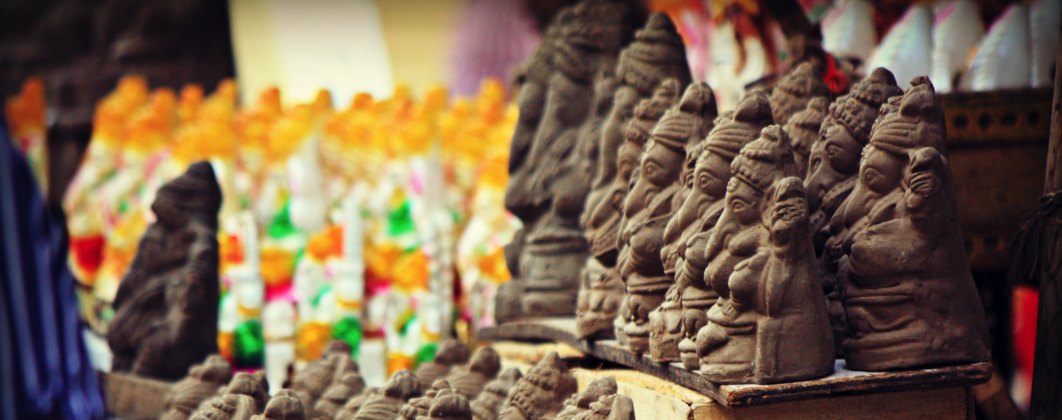
Presently Ganesh festival is celebrated with pomp, competition in magnitude on the size of Ganesh idol, the pandal, the music and the feasting on Prasadam. Big money flows backed by influential people of the society. It is common to see that almost every street in most of the towns and cities a pandal is erected and the festival is celebrated in grand style. It is interesting to investigate as to how the festival started and with what purpose. Imagine as to how the festival would have been celebrated 100 years before? Is there any deep meaning and significance in doing the rituals and practices as we do today to pray the most beloved God of Hindu community?
Ganesh Pooja, particularly during Vinayaka Chavithi also known as Ganesh Chaturthi with its emphasis on offering leaves and traditional foods like Undrallu, Kudumulu, and Modak, reflects a deep connection with health, culture, and the environment. The festival’s timing during the rainy season enhances its relevance, as the rituals align with seasonal changes and the need for health protection. The ethos of sustainability, respect for nature, and the promotion of community values make Ganesh Pooja a meaningful celebration that transcends mere ritual and embodies principles that are increasingly important in today’s world.
The Significance of Offering 21 leaves during pooja.
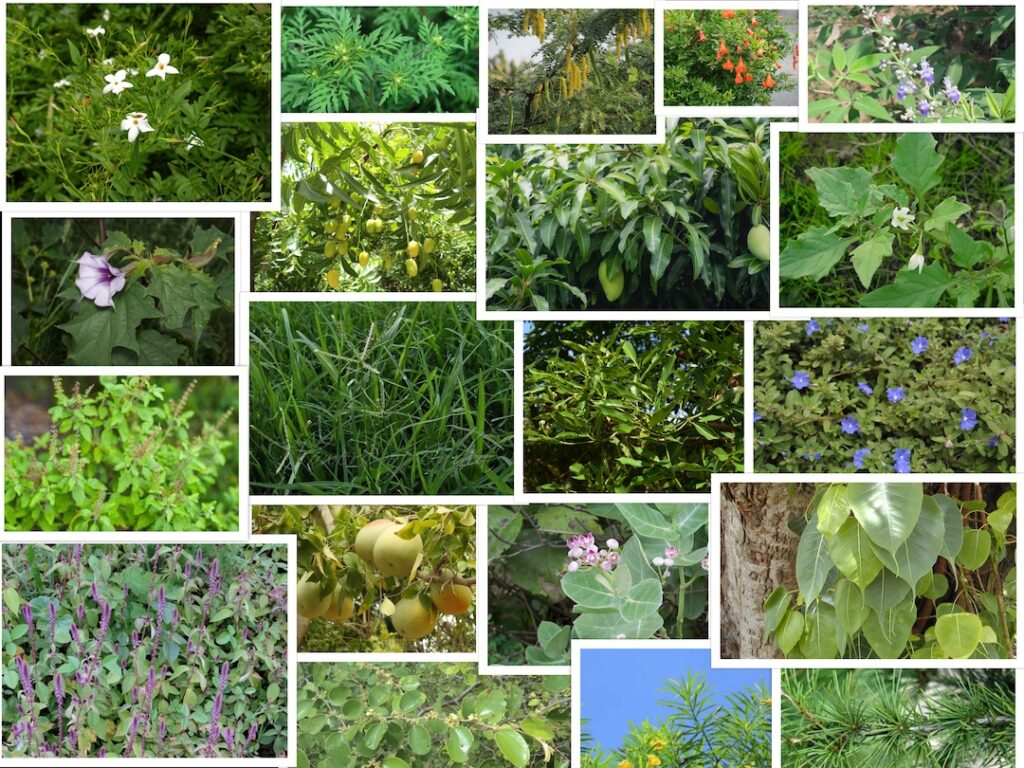
The 21 different types of leaves offered during Ganesh Pooja, known as Patri, are often selected for their medicinal properties. For example, leaves like Neem, Bilva (Bael), and Durva (Bermuda grass) are known for their antibacterial, antiviral, and antifungal properties. During the rainy season, when the risk of infections increases, these medicinal leaves can help in boosting immunity and protecting against diseases.
These leaves, when offered during Ganesh Pooja, are believed to invoke the blessings of Lord Ganesha, bringing prosperity, removing obstacles, and ensuring overall well-being.
The leaves are immersed in the water bodies along with the Ganesha idol .Due to rainy season most of the water bodies are contaminated and the medicinal properties in the leaves purify the water.
Why Kudumulu,Undrallu and Modak for Lord ganesh as Prasadam?
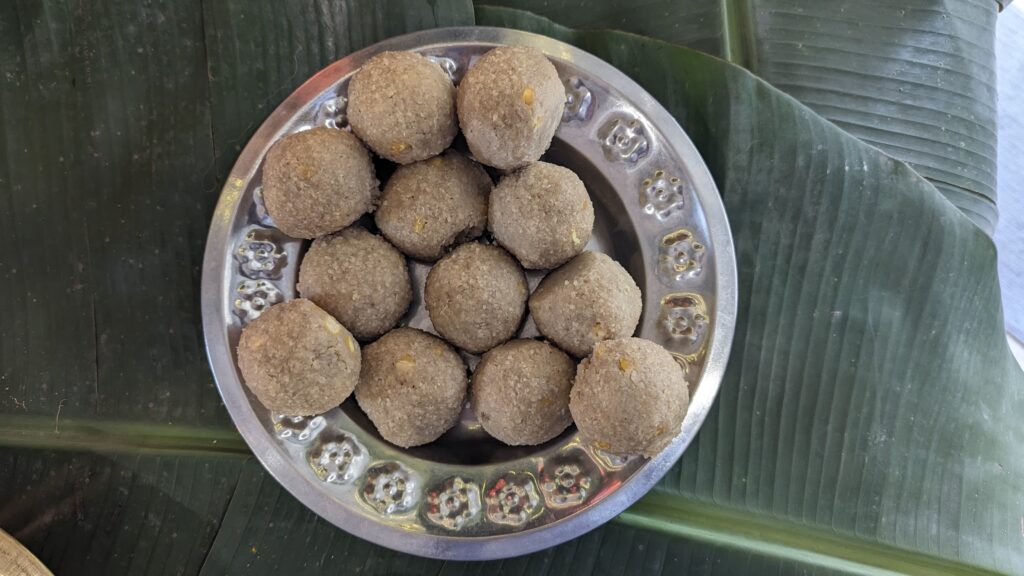
These offerings are made from rice, lentils, jaggery, and coconut, which are not only traditional but also highly nutritious. They provide a good mix of carbohydrates, proteins, and healthy fats, essential for energy and strength, particularly important during the rainy season when the body’s energy requirements may increase.
The use of steamed preparations like Undrallu and Kudumulu ensures that these foods are easy to digest, which is particularly important during the rainy season when digestive issues can be more common.
In Ayurveda, certain foods are recommended during different seasons to balance the body’s doshas (Vata, Pitta, Kapha). The ingredients used in these offerings align with the Ayurvedic principles, providing warmth and aiding digestion during the damp and cool rainy season.
The practice of offering specific foods and leaves is deeply embedded in cultural traditions, passed down through generations. It symbolizes devotion, respect for nature, and adherence to rituals that connect individuals to their cultural roots.
The rainy season is also the time of new harvests. The use of freshly harvested rice, lentils, and other ingredients in the offerings reflects gratitude for the bounty provided by nature and a celebration of the agricultural cycle.
Ethos for respect to Environment.
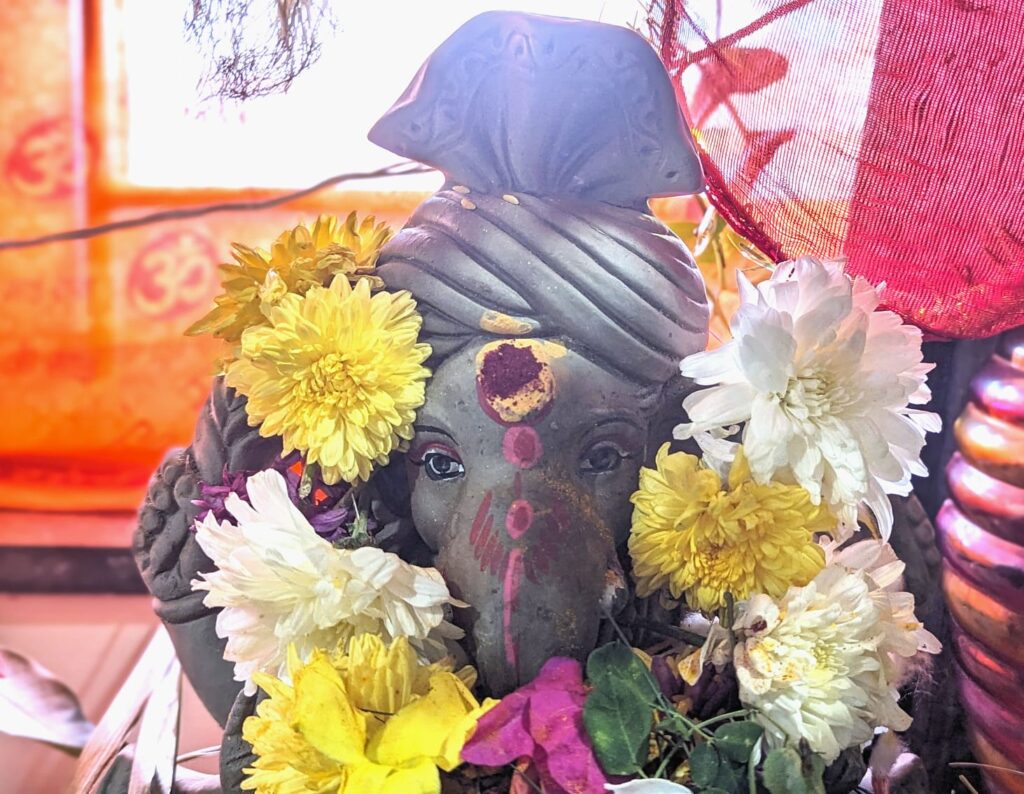
Respect for Nature: Ganesh Pooja emphasizes the connection between humans and nature. The use of natural elements like leaves and eco-friendly ingredients for offerings showcases an ethos of respect for the environment.
Eco-friendly Practices: The tradition of using natural, biodegradable materials like leaves, clay idols, and simple food offerings aligns with sustainable practices. Particularly in the context of environmental concerns, the emphasis on using eco-friendly materials during Ganesh Pooja is a way of promoting sustainability.
Seasonal Awareness: The festival occurs during the rainy season, which is a time when nature is rejuvenating. The use of locally available, seasonal leaves and foods not only supports the local ecosystem but also reduces the environmental impact, as there is no need for transportation of non-seasonal items.
Sustainability of Rituals.
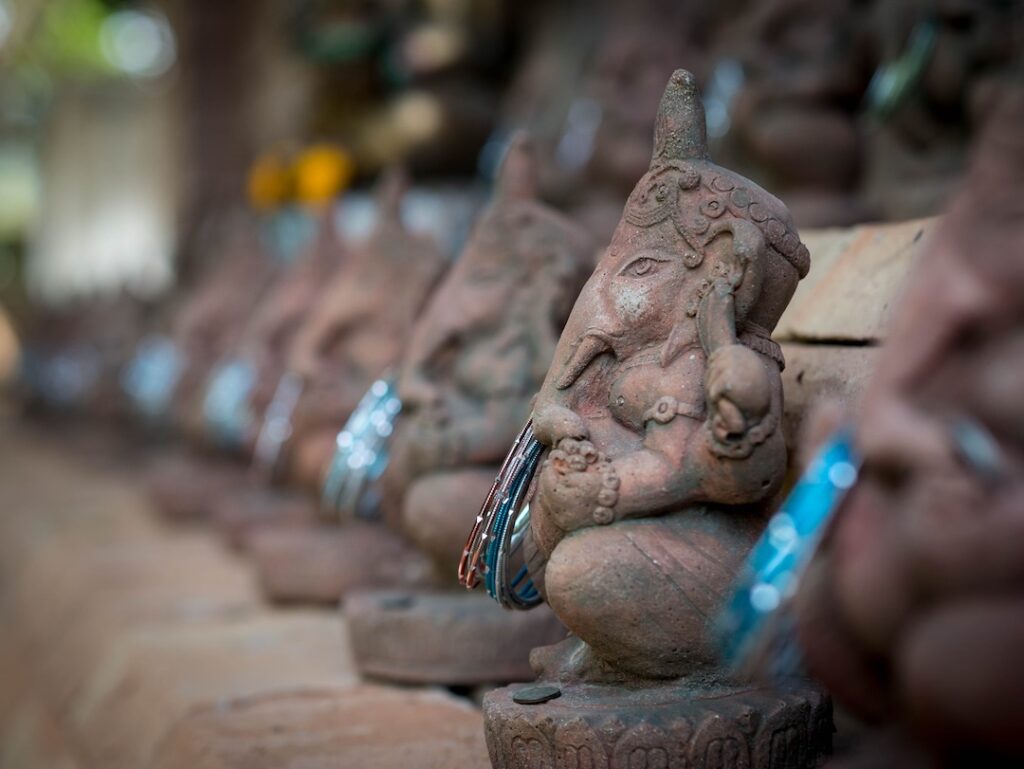
Sustainable Offerings: Traditional offerings like Undrallu, Kudumulu, and Modak are made with locally sourced ingredients, which supports local agriculture and reduces the carbon footprint associated with transporting food items. The simplicity and purity of these offerings also mean that they leave minimal waste and are often consumed after the ritual, ensuring no food waste.
Eco-friendly Idol Immersion: With increasing awareness, many communities are adopting eco-friendly practices such as using clay idols and conducting immersions in artificial tanks rather than natural water bodies. This helps protect water sources from pollution, maintaining the balance of the ecosystem.
Ethical and Spiritual Values.
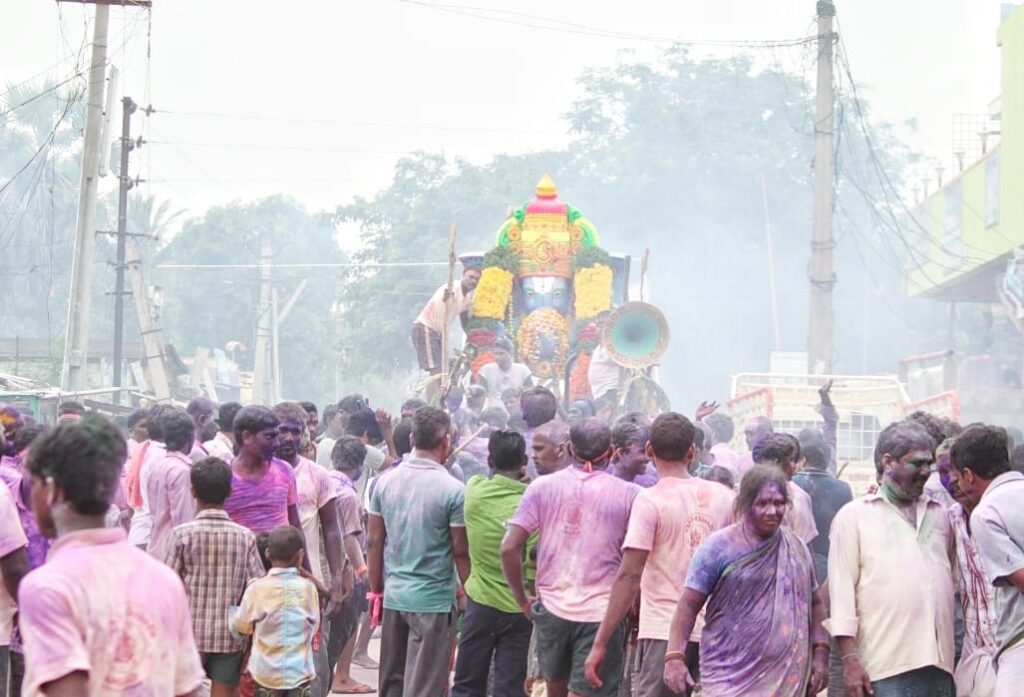
Community and Togetherness: Ganesh Pooja is often celebrated with community gatherings, where people come together to prepare offerings and participate in rituals. This fosters a sense of togetherness, cooperation, and shared cultural identity.
Spiritual Discipline: The rituals associated with Ganesh Pooja, including fasting, offering specific foods, and performing prayers, cultivate spiritual discipline and mindfulness, reinforcing ethical values such as humility, gratitude, and self-restraint.
Significance of Palavilli in Ganesh Pooja.
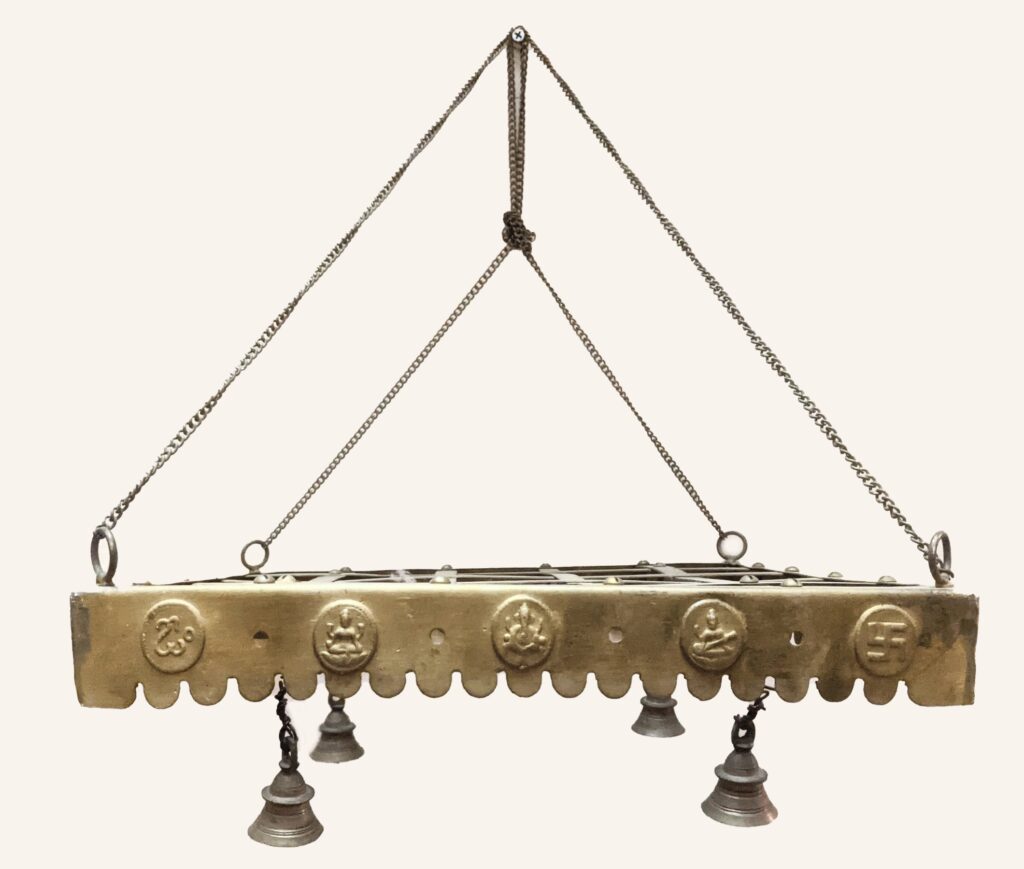
The Palavilli is a decorative canopy or structure placed above the Ganesh idol during Vinayaka Chavithi (Ganesh Chaturthi) Pooja.The Palavilli, placed above the Ganesh idol and decorated with seasonal fruits, flowers, leaves, corn, and vegetables, is a richly symbolic element in Vinayaka Chavithi Pooja. It represents abundance, prosperity, and the blessings of nature, while also serving as a symbolic shelter for the deity. The Palavilli highlights the importance of agriculture, the celebration of the harvest, and the deep connection between spiritual practice and the natural world. It is a beautiful and meaningful tradition that enhances the cultural and spiritual significance of the festival.
Symbol of Abundance and Prosperity: The Palavilli, decorated with a variety of seasonal fruits, vegetables, and corn, symbolizes abundance, prosperity, and the bounty of nature. By offering these natural elements, devotees express gratitude for the harvest and seek blessings for continued prosperity and wealth.
Representation of Nature’s Blessings: The use of seasonal items like fruits, flowers, and corn signifies the blessings of nature and the cycle of life. It is an acknowledgment of the earth’s fertility and the sustenance it provides, reinforcing the connection between human life and the natural world.
Symbol of Shelter and Protection: The Palavilli can be seen as a symbolic shelter or protective canopy over the deity, representing the divine protection that Lord Ganesha provides to his devotees. It reflects the idea that just as the Palavilli shelters the deity, Lord Ganesha shelters and protects his followers from harm and obstacles.
Spiritual Offering: Fruits, flowers, and leaves are considered pure and sattvic (promoting purity and harmony) in Hindu rituals. Offering them as part of the Palavilli is a way of showing devotion and reverence to Lord Ganesha. The freshness and natural beauty of these offerings also symbolize the purity of the devotee’s intentions.
Cultural Tradition and Aesthetics: The Palavilli is a traditional element in the Vinayaka Chavithi celebrations, especially in certain regions of South India. Its colorful and vibrant decoration adds to the aesthetic beauty of the Pooja setup, creating an atmosphere of festivity and joy.
Importance of Ganesh Nimarjan.
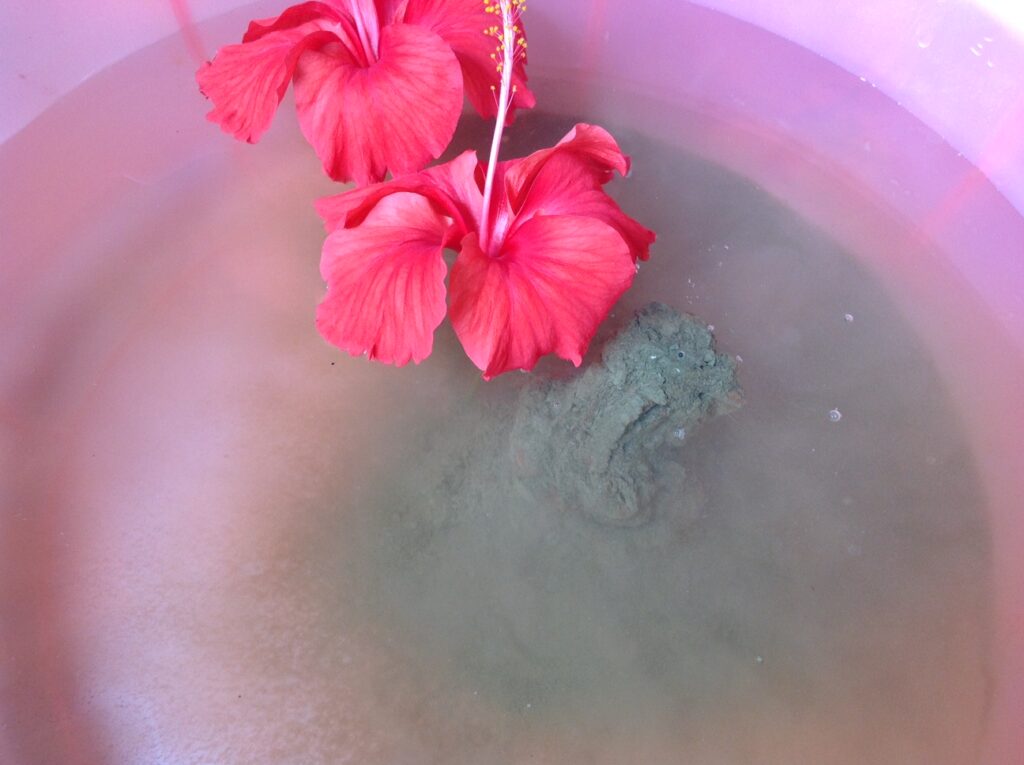
The immersion of the Ganesha idol after Vinayaka Chavithi Pooja is a ritual with profound spiritual, cultural, and environmental significance. Spiritually, it symbolizes the impermanence of life, the cycle of creation and dissolution, and the return of the divine to the cosmos. Culturally, it fosters community bonding, marks the conclusion of the festival, and preserves religious traditions. From an environmental perspective, the practice highlights the need for sustainable rituals that respect the natural world. The movement towards eco-friendly practices in idol immersion reflects a growing awareness of the need to harmonize religious traditions with environmental stewardship.
Symbol of Impermanence: The immersion of the Ganesha idol in water symbolizes the impermanence of life and the material world. It reflects the Hindu philosophy that life is transient and that everything in the material world is temporary. The act of Visarjan teaches devotees to detach from the physical form of the deity, reminding them that the divine presence is eternal and not confined to an idol.
Cycle of Creation and Dissolution:: The immersion represents the cycle of creation and dissolution, which is a fundamental concept in Hinduism. Lord Ganesha is invoked at the beginning of the festival (symbolizing creation) and is then returned to the water (symbolizing dissolution). This cycle mirrors the cosmic process of creation, sustenance, and eventual dissolution, reinforcing the understanding that life is a continuous process.
Sustainability and Eco-friendly Movements: There has been a growing movement towards eco-friendly practices in the celebration of Ganesh Chaturthi. Many communities and individuals now advocate for the use of clay idols, natural colors, and biodegradable decorations to minimize environmental impact. Some cities have also set up artificial immersion tanks to prevent pollution of natural water bodies.
The shift towards sustainable practices is a reflection of an evolving cultural ethos that seeks to balance religious traditions with environmental responsibility.

Copyright © 2021 YK Antiques Home Museum